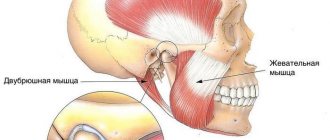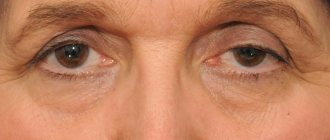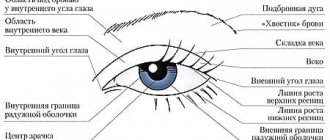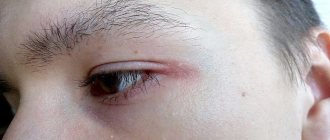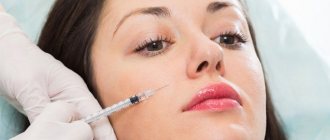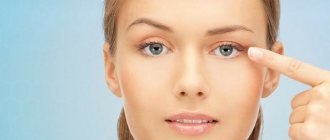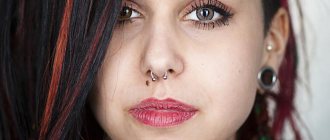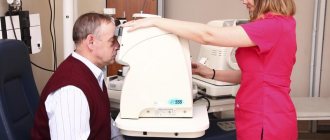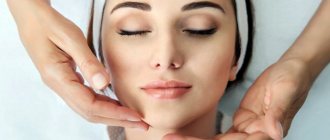There are many different races living on our planet, representatives of which can be immediately distinguished from each other by their appearance. We will never confuse a European with an African because the former has a white skin tone, while the latter has a very dark skin tone. Indians have reddish skin, sometimes referred to as “copper,” while Asians have yellowish, bronze skin. The latter have a very characteristic eye shape, which is called Asian. It seems that the Japanese, Chinese, Vietnamese, etc. have narrow eyes, sometimes like slits.
Why do they have such a strange shape? Scientists put forward several versions on this matter, although they all have their own flaws and cannot be considered the only correct ones.
Subtleties of Asian makeup for European eyes
The Asian type of appearance is at the peak of fashion and this, of course, could not help but be reflected in makeup trends. The fashion for characteristic facial features has led to the fact that more and more often on catwalks and fashion shows you can see that European models are increasingly having their eye makeup done in a special way, trying to bring their eyes as close as possible to the Asian type through make-up techniques.
Tip 5: How to do makeup for narrow eyes
Many girls, looking at themselves in the mirror, find various flaws in their appearance. Thanks to the right makeup , almost all imperfections can be easily corrected. Those with big eyes
You can help by correctly applying makeup for narrow
eyes
, which will visually enlarge them and add expressiveness to your look.
Features of Asian makeup
Classic Asian makeup is, first of all, very fair skin, a clear eyebrow line and, of course, special eyes . What we used to call the “Asian cut” is nothing more than a special form of the structure of the eyelid. Unlike the European eyelid, this eyelid is much flatter, it almost completely lacks a fold and, despite the fact that the Asian eyelid is significantly wider, its area is much smaller than that of the European one.
Therefore, classic makeup schemes are practically not applicable to it.
In addition to the fact that the makeup of the moving eyelid is completely invisible when the eye is open, it is also necessary to take into account the difference between all the folds surrounding the eye from below and from above. This significant difference in relief must be carefully worked out by playing with shadow and light.
Structure of the macula of the eye
The macula coincides with the central zone of the retina. The diameter of the macula is about 5.5 mm. In the very center of the macula there is a depression (pit), the size of which is about 1.5 mm.
Due to the fact that in the macular zone there is a large amount of a special pigment, the color of which is yellow, during ophthalmoscopy this area is colored yellow. In this regard, the macula received its second name. The main pigments contained in the macula are lutein and zeaxanthin. The human body is not able to synthesize these substances on its own; therefore, all pigment reserves come from outside (with food, drugs). Green, orange and yellow foods contain a lot of lutein and zeaxanthin. The main role of pigments is to protect the photoreceptors of the retina from reactive oxygen species and other free radicals. The latter are formed as a result of oxidative reactions and negatively affect nerve cells and the eyeball.
Interestingly, there are no blood vessels in the macula area, so nutrition comes from the adjacent choroid (choroid).
Nuances of choosing cosmetics
When thinking about performing Asian makeup, be sure to take into account the key distinguishing features between representatives of two races - Asians and Europeans.
- Asian skin never has a pink undertone. Accordingly, choose foundations and corrective products with a pronounced yellow pigment.
- By analogy with foundation, we exclude the warmest shades of blush - pink and coral, giving preference to classic beige or caramel color.
- No halftones in cosmetics for eyelashes and eyebrows - only uncompromising black.
- Due to the specificity of the century, bright colors of shadows are mostly not used; the dominant palette is all gamuts that echo the color and tone of the skin. Gold and silver shades are used for accents.
- The only thing that has no color restrictions is lipstick! It can be anything - from fatal red to cold but delicate pink.
Execution algorithm
Any make-up begins, of course, with a base.
The basis
- As with all other techniques, high-quality and carefully executed Asian makeup begins with an even distribution of the main tone throughout the face. Having carefully shaded all the boundaries of the product, 1 tone lighter than the skin tone, it is necessary to additionally lighten the triangle that forms the lower eyelid (the base of the triangle is the line between the inner and outer corners of the eye) and the wing of the nose. The best way to cope with this task is a concealer with reflective particles, applied in a translucent layer using a sponge and additionally shaded with your fingertips.
- Set the foundation with loose powder, and the concealer with matte shadows 1-2 shades lighter than the skin.
- Now the face is prepared for correction. It is recommended to give preference to dry textures - bronzer or matte shadows. Please note that the product that will be used to create shadows and reliefs on the face should under no circumstances contain shimmer or any reflective particles, as well as red pigment, even in a minimal ratio. That is, the most matte product in all shades of gray-brown.
- Use matte bronzer to darken the area under the cheekbone, hairline across the entire face, sides of the bridge of the nose, and the bottom of the chin.
Preparing the century
- Apply primer to the upper eyelid (both its moving part and the sub-brow area), it is best to spread it with the pad of your finger - the warmth of your hands will warm the product and make it more pliable, and contact with the skin will allow you to feel the degree of coverage, which is extremely important, because . Too much eyeshadow base will have the opposite effect and your makeup will soon start to smudge.
- Powder the eyelid again over the primer.
Why Asians' Eyes Are Different From Most Westerners' Eyes
Scientists are still debating, but one theory suggests that the ancestors of the Chinese, Japanese, Tibetans, other East Asians and Native Americans came from places where strong cold winds blew or where wind blowing sand was an everyday occurrence.
As a result, their ancestors developed small, narrow eyes and an additional protective fold over the eyelid - a kind of evolutionary adaptation to the early cold environment . As do smaller nostrils to retain heat, as well as excess fat in the eyelids.
And with warming, the mutation did not disappear because it did not create inconvenience. Others consider it a genetic remnant of people from both the north (more wind and snow that reflects the shining light) and the south (lots of dust and bright sun).
One New York Times article suggested that a gene mutation 35,000 years ago in what is now China is responsible for some of the distinctive features of modern Asians, such as thicker, fuller hair, extra sweat glands and smaller breasts.
Alamy
In any case, it was natural selection - for some reason, such eyes turned out to be more useful for the survival of prehistoric people and were inherited in subsequent eras. And it is not surprising that they are found all over the world: millennia of interracial interbreeding have transformed the pure hereditary material of humanity into a genetic cocktail.
On one point, researchers are almost completely unanimous - the wide distribution of almond-shaped eyes is associated with sexual selection . For centuries, this shape has been perceived as a pleasing aesthetic factor and therefore as a synonym for beauty when choosing a sexual partner .
What are the features of Asian makeup?
Classic makeup schemes don't work when it comes to Asian makeup. When using decorative cosmetics, you should take into account that oriental beauties have certain characteristics.
- Asian women's skin color never contains a pinkish undertone. This means that foundation and corrective compositions should be chosen with yellow pigments. Accordingly, we exclude coral, terracotta and pink blush. We settle on classic colors of beige or caramel.
- When tinting eyelashes and eyebrows, only an uncompromising jet black color is used.
- The shape of the eyelid dictates the use of a special palette of shadows: all shades close to skin color. Gold and silver paints are chosen to place accents.
- But there are no restrictions on the color of lipstick. The lips are decorated with fatal bright scarlet lipstick and cold pale pink and rich burgundy color.
The main problem that we have to solve is how to make an Asian eye shape for a girl with a Slavic appearance. After all, only with the help of cosmetics it is necessary to achieve the effect of a flat eyelid, which has almost no crease.
How to decide on a color scheme?
Girls are interested in how to do makeup for Asian eyes without breaking beauty laws. As a rule, Asian women use beige and golden eye shadow. If you want to experiment with your appearance, then you can try something new. Only here you need to focus on your skin color type. Olive and brownish shades harmonize perfectly with each other.
- Brown-eyed girls with black hair will suit the entire blue palette. You can brighten your cheeks and accent your lips with pink lipstick.
- Brunettes are recommended to use make-up in green, lilac, lavender, steel or violet tones. When using the smoky eyes style, you can use a cool range of colors. For a celebration, rich tones of makeup are suitable.
Usually Asian women have brown eyes, but it is extremely rare to find them with gray or blue eyes. If there are rare beauties of this type among Asian women, then they can use a steel or blue palette of colors. Silver-violet color harmonizes green-eyed girls.
What will you need?
We perform Asian makeup on a girl with European appearance. Before we begin solving the problem of how to draw Asian eyes, let’s prepare suitable cosmetics and a set of brushes and sponges.
Materials that will be useful: foundation, always with a yellow undertone, light powder, concealer with reflective particles, a palette of shadows in natural shades in beige-brown tones, taupe bronzer, black liner or gel eyeliner, black mascara, soft pink or beige pencil, lipstick.
Step-by-step execution algorithm
- Cleansing and moisturizing the skin.
- Applying the base. Choose a foundation one tone lighter than your skin color. Carefully shade the borders. Additionally, use concealer to highlight the triangle formed by the lower eyelid and the wing of the nose. Apply the product in a translucent layer with a sponge, and finally blend with your fingertips.
- Setting the foundation with loose powder. Apply the concealer with matte shadows one or two shades lighter than your own skin.
- For a clear contour, we work on the oval of the face. We darken the hairline, areas under the cheekbones, wings of the nose, and the lower border under the chin with matte bronzer.
- We shape the eyebrows. Even if you are a fair-haired beauty, we take a coal-black pencil. Set the shape of the eyebrow straight or curved, like a bow string. The main rule: maximum geometricity, clear contours, no shading.
- We begin to draw the eyes. Use a black liner to apply eyeliner on the upper eyelid. First, we draw a thin line along the eyelash edge - from the place where the active growth of eyelashes begins to the outer corner of the eye. Carefully paint the spaces between the eyelashes and lower the eyeliner line slightly downwards. So the eye will visually look narrow and elongated. And we finish the process with the arrow up, about two to three mm.
Blepharoplasty for Asian eyes
How to turn an Asian eye shape into a European one? What can plastic eyelid surgery provide for Asian eyelids?
Plastic surgery can not only rejuvenate one’s appearance and make it more attractive, but also completely change the innate parameters of the face and body. Recently, in Asian countries it has become fashionable to have a European appearance. One of the most characteristic features of the oriental face type is the Mongoloid type of eyes, characterized by a narrow palpebral fissure and a fold in the inner corner of the eye.
Asian blepharoplasty is designed to completely change the structure of the upper eyelids towards a European type of appearance.
Instructions
The easiest way to draw a kitten's eyes is in anime style. It is not realistic, but eyes drawn in this style turn out to be very expressive and a little sad. Draw two large circles on the kitten’s face - these are the future eyes. Create the pupils, these are also simple black circles. For greater effect, add highlights - at the bottom of the eyes, draw two circles smaller than the pupil, both highlights should be of different sizes. That's all. But this method is not suitable for those who want to make their kitten in a realistic manner.
Draw the kitten's head. Draw two lines, horizontal and vertical. They will divide the head into four equal parts. At the intersection of the lines there will be a bridge of the nose. The eyes should be on a horizontal line so that this line divides them in half. Draw the eyes themselves (simple circles), slightly departing from the vertical line. The eyes should be large, like those of real kittens. You can’t draw eyes slanted; cats practically don’t know how to rotate them, so they have to turn their heads.
Once the outline is done, make the upper eyelid droop slightly. The outer corners of the eye should be on a horizontal line. The inner corners should be slightly lowered towards the vertical line. The whites of cats' eyes are not visible. The pupils change their size depending on the lighting. In a dark place the pupils are round, in a light but dim place they are slightly dilated, in a very bright place the pupils turn into narrow black stripes. Erase the extra lines.
The light falls on the eyes equally, so the highlights should be drawn in the same place in both eyes. You can draw a kitten in a slightly primitive version. In this case, simple vertical sticks will serve as eyes. If you make them slanted, you will get an Asian-looking kitten. Another simple option for drawing eyes is simple ovals and circles filled in with the color you want, and a black dot or line for the pupil.
Indications for blepharoplasty of Asian eyelids
Asian eyes have several features compared to European ones:
- single fold instead of double fold among Europeans,
- excess fatty tissue around the eyes,
- dense muscle tissue in this area,
- the inner corner of the eye is not visible,
- excess skin at the lacrimal tubercle,
- general puffy, sleepy appearance of the eyes.
Asian eye surgery is performed if the patient wishes to get rid of all or part of these features for aesthetic purposes. It allows you to remove drooping eyelids, which can cause vision problems, open your eyes, and increase their width.
The operation of transforming an Asian gaze into a European one can also be performed on Europeans if they have partial features of the eastern shape of the eyes.
For example, the fold near the inner corner of the eye - the epicanthus - can often become inflamed and interfere with normal vision. In this case, surgical eye correction is also necessary.
Diagnostics
An ophthalmologist can visually determine the nature of the structure of the eye. Prescriptions for modification would be the absence of supraorbital skin, the presence of a Mongoloid feature, a slight gap, vision problems, and personal preference. Next, a consultation with a surgeon is required. He selects the adjustment method on an individual basis. Before surgery, it is better to conduct the following studies:
- general blood and urine analysis;
- biochemical blood tests;
- coagulogram;
- examination by a surgeon and anesthesiologist.
Contraindications to Asian blepharoplasty
The list of diseases for which eastern eyelid surgery cannot be performed is quite standard:
- diseases of the endocrine system: diabetes mellitus,
- autoimmune diseases,
- infection in the body
- period of menstruation in women,
- pathologies of the circulatory system, heart and blood vessels,
- bleeding disorders,
- oncological neoplasms,
- dry eye syndrome.
In addition, if the lower eyelid shows obvious swelling and excessive bags, it is worth postponing the operation until the causes of this phenomenon are finally clarified.
Types, preparation, rehabilitation after Asian blepharoplasty
Blepharoplasty of Asian eyelids can go in several ways:
Using a cut
Classic surgical operation. On the upper eyelid, the doctor makes an incision and removes excess skin and fat underneath, then forms a double fold, which is considered a sign of beautiful eyes in patients with Mongoloid appearance, and fixes the tissue in a new position. This procedure is suitable for patients with significant drooping of the upper eyelid beyond the lash line.
No incision
A miniature puncture is made in the inner eyelid, a double fold is formed and all layers of tissue are stitched. This is how European eyes are usually achieved if the patient’s skin is too thin or the upper eyelid is only slightly drooping.
Preparing for surgery
Before Asian eyelid surgery, the patient must undergo full preparation. Firstly, he will have a detailed consultation with a plastic surgeon, where the details of the operation, the type of anesthesia, the course of the procedure and possible complications will be discussed in detail.
The doctor also gives referrals to specialized specialists with whom the patient should be examined: an ophthalmologist, a therapist. Secondly, in the presence of chronic diseases that are not a contraindication to surgery, the patient receives clearance from the appropriate doctors: oncologist, endocrinologist, dermatologist, etc. Next comes testing: a blood test for sugar, infections and coagulation - this is the main analysis.
How to change
The desire to change the shape of the eyes through plastic surgery is characteristic mainly of Asian nationalities.
For such surgical interventions:
- tighten eyelids;
- reduce their area;
- increase the shape of the visual organs.
The shape of a person’s eyes (its types are described below), if you don’t like it, can always be corrected with the help of modern plastic surgery. There are several methods for this in the medical industry. With their help, the shape of the visual organs changes forever and irrevocably.
People with:
- acquired deformations of the ocular section as a result of injuries or burns;
- epicanthus or swollen upper eyelid;
- congenital incomplete cleft eyelid;
- narrow palpebral fissures;
- asymmetrical eyes;
- drooping eyelids;
- strongly convex or round visual organs;
- bags under the eyes.
Canthoplasty
With canthoplasty, the eye angles are changed. Performing this operation, surgeons correct the lower and upper eyelids. Their lowering or raising is accomplished by tightening the tendons. During this, the eyelids are detached from the cartilage and secured at an optimal level. Before the intervention, the specialist marks the places for new placement of the corners of the eyes.
Canthoplasty is performed for:
- improving the appearance of the face;
- following medical instructions;
- correction of aesthetic defects;
- rejuvenation
Before canthoplasty, patients should visit:
- cardiologist;
- allergist;
- therapist.
The anesthesiologist or surgeon is informed about the identified allergy.
Before surgery:
- do not use blood thinners;
- do an ECG;
- take blood and urine tests;
- Tell your doctor about the medications you are taking.
Canthoplasty is contraindicated for people with:
- high intraocular pressure;
- endocrine pathologies;
- dry eye syndrome;
- progressive myopia;
- cardiovascular diseases;
- oncology;
- poor blood clotting.
Canthoplasty lasts about 2 hours and can be done at any age. The result after such a correction is quite long-lasting and attractive.
Canthoplasty is performed by a plastic surgeon as follows:
- Applying markings previously discussed with the patient to the eyelids.
- Treating the operated areas with an antiseptic.
- Introduction of anesthesia.
- Performing dissection of the skin of the eyelids.
- Loosening or tension of the tendon through the resulting incision.
- Removal of excess fat and skin folds.
- Suturing the wound and applying a bandage.
Complications that may occur after canthoplasty include:
- eversion or non-closure of eyelids;
- bleeding or scar separation;
- hardening of seams;
- wound infection;
- the appearance of skin pigmentation;
- irreversible asymmetry of gaze.
Instead of canthoplasty, you can choose:
- hardware eyelid lift;
- thread lifting of the eye incision;
- blepharoplasty.
The advantages of canthoplasty are:
- changes in the size and shape of the visual organs;
- getting rid of eye asymmetry;
- raising the inner canthuses (corners) of the eyes;
- giving the skin elasticity and firmness;
- reducing pressure on the eyes;
- smoothing wrinkles;
- creating a lighter and more open look;
- getting rid of age-related swelling of the eyelids.
The disadvantages of the correction included:
- the need to change lifestyle before and after surgery;
- existing contraindications;
- expensive price;
- the possibility of side effects;
- difficulty in choosing a specialist and medical institution.
The shape of a person's eyes (there are only 3 types of it) depends to some extent on the habitat of people. This trait is considered a genetically determined trait that is inherited in an autosomal dominant manner. It is also the result of ancient selective breeding.
Canthopexy
Drooping eyelids or the outer corners of the eyes are lifted using canthopexy.
But such a correction cannot be done to patients with:
- allergies;
- acute forms of diseases;
- oncology;
- diabetes mellitus;
- acute chronic diseases;
- thyrotoxicosis;
- cardiovascular complications;
- infections;
- blepharitis or conjunctivitis;
- glaucoma;
- fresh eye injuries;
- dry eye symptoms;
- neoplasms on the eyelids;
- myopia;
- exacerbated systemic lupus erythematosus;
- detached retina.
Canthopexy is performed in an ophthalmology department or clinical hospital. Before it, patients are examined and then sent for computer modeling. For lateral canthopexy, local anesthesia is used, and for medial canthopexy, general anesthesia is used.
In combination with canthopexy, they can also do:
- facial circular lift;
- medium lifting;
- blepharoplasty.
The rehabilitation period after canthopexy usually lasts 0.5-1 month. Patients recover from surgery within 3-7 days. At this time, their eyelids become motionless, and their vision decreases.
The skin may show:
- voltage;
- hyperemia;
- photosensitivity;
- swelling;
- redness;
- bruises.
By the end of the postoperative period, all ocular functions return to normal.
During this time, doctors advise their patients not to:
- use cosmetics;
- work on computer;
- wear contact lenses;
- watch TV;
- do fitness;
- sleep on your stomach;
- visit the sauna;
- being outside during the day without sunglasses.
After the operation, a thin, dense red suture is formed. Subsequently, it disappears, hiding in the fold of the eye. After 2 months the eyelids are leveled, and the outer corners of the visual organs are raised. The results of canthopexy last 5-10 years.
The shape of a person's eyes (its types have been shaped by sexual selection and genetic-automatic processes over the centuries) is determined by the racial background of people. Adaptation and weather conditions are also added to this criterion. The type and shape of the visual organs also depend on the anatomical characteristics of racial groups.
The advantages of canthopexy are:
- relatively affordable cost;
- not very invasive;
- long lasting result;
- short postoperative period.
The disadvantages of corrective intervention include:
- incomplete elimination of pronounced aesthetic defects;
- complications after surgery;
- manifestation of keloid scars.
Blepharoplasty
Blepharoplasty (anesthesia is required for the operation) is done for severe:
- wrinkles;
- drooping upper eyelids;
- bags under the eyes.
Oriental blepharoplasty (correction of the eastern shape of the eyes) can be:
- corrective;
- the upper one, where the epicanthus is excised and a double fold is created;
- circular, combining lower and upper types of correction;
- lower, in which excess skin and adipocyte hernias are removed.
The operation is not performed for those who have:
- very large bags and swelling under the eyes;
- high cranial or blood pressure;
- infectious or acute diseases;
- malignant tumors;
- diabetes;
- blood or thyroid diseases.
Oriental blepharoplasty
The shape of a person’s eyes (its types have undergone various and numerous mutations throughout human existence), especially if it is eastern, can always be changed with the help of plastic surgery towards a European one. Surgeons call this operation “Singapuri”. It creates a supraorbital area and removes the sagging eyelid. After this, the look acquires openness and expressiveness.
Correction of Asian eyelids is divided into:
- age-related (suitable for elderly patients), in which the outer corners of the eyes are raised;
- natural, when the surgeon makes an incision, turning it into a fold on the upper eyelid at the inner canthus;
- semilunar, it is optimal for mixed nationalities;
- longitudinal
Singapura (oriental blepharoplasty) with non-incisional suture should be performed as follows:
- Apply 1 mm punctures to the upper eyelid.
- Skin lifting.
- Applying deep sutures between the tendon and the skin to strengthen the fold created.
- Final suturing and bandaging.
The advantages of this method of performing surgery to correct the eastern eyelids include quick execution and the absence of scars.
The disadvantages include:
- can be performed only on thin skin and weak Mongoloid eyelids;
- palpable threads;
- impossibility of simultaneous removal of fat and skin.
With classic incisional Singapore, the following is performed:
- Incision in the natural crease of the eyelid.
- Getting rid of hernias with resection of periorbital fat and soft tissue along the eyelash growth. This excision affects the depth of the skin fold being formed.
- Cutting off the muscles tightly adjacent to the eye.
- Connection of tendon edges and wounds.
- Cosmetic suturing and bandaging.
This method eliminates excessive eye skin density and ptosis. Patients recover from this operation for about 2 months. The surgery itself lasts 1.5 hours.
Upon completion of the operation, the eyelids are covered with aseptic bandages for 4 hours. Analgesics are not necessary, since severe pain is not observed after eyelid correction. The stitches are removed on the 5th day, and bruising and swelling disappear on the 10th day.
After oriental blepharoplasty, when the doctor’s recommendations are not followed in the postoperative period, the following phenomena are usually observed:
- curvature of the cartilage tissue of the eyelid;
- burning in the eyes;
- seam divergence;
- dry eyes or watery eyes;
- minor swelling and inflammation;
- long lasting scars;
- blepharoptosis;
- asymmetry of the eyes.
People's eyes, especially their shape, were formed under the influence of external environmental factors. The types of these characteristics of human races largely depend on climate and other living conditions. Centuries-long evolution also played a significant role in the creation of such distinctive features. Plastic surgery is always ready to correct its changes.
Specific side effects after correction of the eastern eye shape include:
- double vision due to muscle damage;
- a feeling of stinging and dryness in the eyes, which disappears on its own after 10 days;
- lacrimation due to disruption of the glandular ducts;
- tightening of the outer canthus of the eye, which can be eliminated with surgical intervention;
- the occurrence of conjunctivitis;
- separation of the upper eyelid, requiring repeated surgery;
- eversion of the eyelids, which can be treated with a special massage.
After eyelid surgery it takes 2 weeks:
- visit a specialist;
- do not drink alcohol;
- avoid reading and being at the computer;
- do not exert yourself physically;
- do not use cosmetics;
- Always use eye drops prescribed by your doctor;
- protect your eyes from the sun;
- Avoid eye infections and irritation.
The advantages of laser blepharoplasty are:
- short postoperative rehabilitation;
- quite predictable outcome;
- fast execution (about 30 minutes);
- instant healing without any traces.
When forming European eyelids, modern surgeons do not make long incisions. Due to this, the likelihood of scarring is significantly reduced. But if scars do appear, then after a while they are removed with a laser.
For a quick recovery after eyelid surgery, it is recommended:
- treating scars with antiseptic drugs, and after 7 days - with antibacterial creams with a softening effect;
- night rest on your back with your head placed on a high pillow;
- avoid excessive eye strain;
- exclusion of physical activity;
- avoid tilting your head forward or backward;
- adhere to a special diet;
- drink plenty of clean water (at least 1.5 liters per day).
The effectiveness of plastic eyelid correction is manifested by:
- younger-looking facial features;
- increased eye size;
- expressiveness and openness of view;
- formed double folds on the upper eyelids;
- absence of drooping eyelids;
- disappearance of wrinkles and bags under the eyes;
- acquiring new, clearer and more pleasant eye contours;
- complete absence of traces in the form of scars and cicatrices.
The concept of an ideal eye shape does not exist at all. Often the section of the human visual organs is mixed. If someone is not satisfied with the appearance of their own eyes, then it can be corrected. This is done by plastic surgeons. Specialists in this field offer a wide range of methods for correcting forms.
Rehabilitation period
Immediately after surgery, unpleasant sensations in the area of skin injury are inevitable. The patient may experience pain in the eyes, pain, dryness, and even double vision. This is normal for any surgical procedure.
For the first 10-14 days, the eyes will be swollen and the sutures will turn red. The patient is given appointment dates to see the doctor to process the surgical incisions, or he does it at home in strict accordance with the surgeon’s instructions.
Recommendations
To avoid complications, the person operated on must follow some medical recommendations:
- do not touch your eyes with your hands, protect them from sunlight and any influences; at first it is generally better to go outside only wearing sunglasses,
- you can't use cosmetics,
- you need to refrain from physical activity and sports,
- sleep only on a high pillow and never face it,
- do not smoke or drink alcohol, as this slows down the healing of injured tissues,
- treat your eyes with special antiseptic drops - your doctor will prescribe them for you,
- limit to a complete ban reading books, working on a computer and watching TV,
- do not use lenses, temporarily switch to regular glasses.
Eyes are the mirror of the soul
- Large eyes are a sign of a sensitive person with keen perception and accurate assessment of everything that brings aesthetic pleasure. Strong leadership potential and an attractive personality make a person with large eyes a natural candidate for high social position.
- Small eyes indicate a shy, introspective personality, a good-natured person who has difficulty adapting to new people, places or situations. Although people with small eyes do not express themselves very clearly, they are still capable of intellectual potential and become artists or scientists. On the romantic side, they are very loyal and, if provoked, very jealous.
- Are the eyes in a straight line, not deviating either up or down? If so, then these are most likely the eyes of a successful person who is in harmony with society, one who is good-natured, honest and conscientious.
- Raised eyes belong to a sensitive person with developed intuition, who knows when to take risks with great benefit for himself. Decisions are made easily, and danger is rarely perceived as an obstacle to achieving goals.
- Downward slanted eyes, on the other hand, indicate a person who prefers to ingratiate himself and depend on others rather than plan his own course of action. Optimistic and good-natured, he easily becomes a victim, especially often a victim of the opposite sex.
Now let's look at the shape of the eyes as a whole.
Possible complications
Any surgical intervention in the body is fraught with complications, especially in the sensitive eye area. With the correct surgical technique, there are practically no complications.
Unsuccessful blepharoplasty can cause the following troubles:
- dehiscence and infection of postoperative sutures,
- inflammatory process in the injured area, requiring antibiotics,
- inversion of the upper eyelid,
- subcutaneous hematomas,
- eye asymmetry,
- displacement of the lacrimal openings and subsequent constant lacrimation,
- blepharoptosis - significant drooping of the upper eyelid,
- conjunctivitis.
Many of these consequences can be treated conservatively—you just need to consult a doctor in time for help. However, some side effects of blepharoplasty can only be corrected by repeat surgery.
Result (Asian look -> European eye shape)
The results of blepharoplasty will become obvious after two to three months, when the swelling has completely subsided, the injured tissue has taken root in a new place, and the stitches become almost invisible.
After surgery, the stitches turn white over time and are easily camouflaged with decorative cosmetics, and after six months only an experienced plastic surgeon can notice them. After the procedure using the incision-free technique, there will be no stitches left at all.
Results for life
Blepharoplasty for Asian eyes is performed once and does not require repeated correction. The results last a lifetime. Photos before and after eyelid surgery show a noticeable difference: the oriental shape of small eyes changes to an open European look.
The face changes dramatically, because the eyes are the main part of the face, on which the entire appearance depends. This operation is very successful not only among women who care about their beauty, but also among men for whom some features of oriental eyes prevent them from seeing normally.
Below are the most common optical problems
Myopia - the eye cannot focus on distant objects. The cornea may be excessively curved.
Farsightedness—the eye cannot focus on nearby objects. The cornea may be too flat.
Astigmatism - objects both near and far appear blurry. The surface of the cornea is unevenly curved.
In order for vision to be sharp and clear, the eyes must focus almost parallel rays of light into one beam, converging on the retina deep in the eyes. If the light rays do not converge in the right place, we get a blurry image.
No matter how good your vision is currently, over time the lenses in your eyes become cloudy and the muscles responsible for focusing weaken. As a result, presbyopia (senile farsightedness) develops. Such an intimidating name indicates that you will soon have problems focusing your gaze on nearby objects.
In fact, the changes that underlie presbyopia begin to occur quite early. Small children focus their eyes on objects that are very close to their eyes, but adults need to step back to get a good look at the same object.
To truly protect your eyes, you need to stop worrying about poor lighting on your desk and start being aware of the light. Over time, the sun's relentless UV rays, especially harsh on hot summer days, can contribute to the development of serious eye diseases: cataracts (associated with clouding of the lens) and macular degeneration (impaired retinal function, causing blurred vision and blindness). The best protection against such problems is to wear sunglasses.
